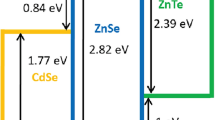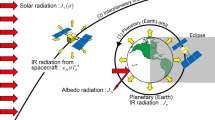Abstract
While numerous experiments have demonstrated the efficacy of high voltage cold atmospheric pressure plasmas (HVCAPs) in sealed packages for microbial inactivation, the influence of the package on the emitted species measured during HVCAP discharge is poorly understood. This study elucidates the impact of the package on plasma generation in sealed packages for four separate gases (ambient air, commercial grade compressed air, a helium/air mixture, and nitrogen) placed in commercially available transparent plastic containers and bags representative of the materials used in the food industry. The container and bag individually reduced emission signal intensity by an average of 63 and 45%, respectively, across the measured wavelengths of 200–1100 nm, demonstrating that they acted as broadband absorbers. Neither the container nor bag caused additional emission lines to appear, indicating no significant effect on the types of species generated. Considering the minimum applied voltage necessary to induce a discharge, the power dissipated by the nitrogen and ambient air plasma generated at 72 ± 3.7 kV RMS were comparable to the compressed dry air discharge generated at 80 ± 3.7 kV RMS. The helium discharge at 37 ± 3.7 kV RMS absorbed approximately 92% more power than these gases. Rotational temperatures ranged from 285 K for helium to 479 K for compressed air. These results indicate that the package impacts the intensity distribution but not the presence of the most dominant peaks, although further studies are required to elucidate the impact on less intense peaks.












Similar content being viewed by others
References
Hayashi N, Guan W, Tsutsui S, Tomari T, Hanada Y (2006) Sterilization of medical equipment using radicals produced by oxygen/water vapor RF plasma. Jpn J Appl Phys Part 1 Regul Pap Short Notes Rev Pap 45:8358–8363. https://doi.org/10.1143/jjap.45.8358
Isbary G, Heinlin J, Shimizu T, Zimmermann JL, Morfill G, Schmidt HU, Monetti R, Steffes B, Bunk W, Li Y, Klaempfl T, Karrer S, Landthaler M, Stolz W (2012) Successful and safe use of 2 min cold atmospheric argon plasma in chronic wounds: results of a randomized controlled trial. Br J Dermatol 167:404–410. https://doi.org/10.1111/j.1365-2133.2012.10923.x
Suhem K, Matan N, Nisoa M, Matan N (2013) Inhibition of Aspergillus flavus on agar media and brown rice cereal bars using cold atmospheric plasma treatment. Int J Food Microbiol 161:107–111. https://doi.org/10.1016/j.ijfoodmicro.2012.12.002
Kong MG, Kroesen G, Morfill G, Nosenko T, Shimizu T, van Dijk J, Zimmermann JL (2009) Plasma medicine: an introductory review. New J Phys 11:115012. https://doi.org/10.1088/1367-2630/11/11/115012
Kuchenbecker M, Bibinov N, Kaemlimg A, Wandke D, Awakowicz P, Viöl W (2009) Characterization of DBD plasma source for biomedical applications. J Phys D Appl Phys 42:45212. https://doi.org/10.1088/0022-3727/42/4/045212
O’Connor N, Cahill O, Daniels S, Galvin S, Humphreys H (2014) Cold atmospheric pressure plasma and decontamination. Can it contribute to preventing hospital-acquired infections? J Hosp Infect 88:59–65. https://doi.org/10.1016/j.jhin.2014.06.015
Vujošević D, Mozetič M, Cvelbar U, Krstulović N, Milošević S (2007) Optical emission spectroscopy characterization of oxygen plasma during degradation of Escherichia coli. J Appl Phys 101:103305. https://doi.org/10.1063/1.2732693
Trinetta V, Vaidya N, Linton R, Morgan M (2011) A comparative study on the effectiveness of chlorine dioxide gas, ozone gas and e-beam irradiation treatments for inactivation of pathogens inoculated onto tomato, cantaloupe and lettuce seeds. Int J Food Microbiol 146:203–206. https://doi.org/10.1016/j.ijfoodmicro.2011.02.014
Connolly J, Valdramidis VP, Byrne E, Karatzas KA, Cullen PJ, Keener KM, Mosnier JP (2013) Characterization and antimicrobial efficacy against E. coli of a helium/air plasma at atmospheric pressure created in a plastic package. J Phys D Appl Phys 46:35401. https://doi.org/10.1088/0022-3727/46/3/035401
Andrews LS, Key AM, Martin RL, Grodner R, Park DL (2002) Chlorine dioxide wash of shrimp and crawfish an alternative to aqueous chlorine. Food Microbiol 19:261–267. https://doi.org/10.1006/yfmic.493
Laroussi M (2009) Low-temperature plasmas for medicine? IEEE Trans Plasma Sci 37:714–725. https://doi.org/10.1109/TPS.2009.2017267
Laroussi M, Akan T (2007) Arc-free atmospheric pressure cold plasma jets: a review. Plasma Process Polym 4:777–788. https://doi.org/10.1002/ppap.200700066
Ehlbeck J, Schnabel U, Polak M, Winter J, von Woedtke T, Brandenburg R, von dem Hagen T, Weltmann K-D (2011) Low temperature atmospheric pressure plasma sources for microbial decontamination. J Phys D Appl Phys 44:13002. https://doi.org/10.1088/0022-3727/44/1/013002
Schutze A, Jeong J, Babayan S, Park J, Selwyn G, Hicks R (1998) The atmospheric-pressure plasma jet: a review and comparison to other plasma sources. IEEE Trans Plasma Sci 26:1685–1694. https://doi.org/10.1109/27.747887
Pignata C, D’Angelo D, Fea E, Gilli G (2017) A review on microbiological decontamination of fresh produce with nonthermal plasma. J Appl Microbiol 122:1438–1455. https://doi.org/10.1111/jam.13412
Pan Y, Sun D-W, Han Z (2017) Applications of electromagnetic fields for nonthermal inactivation of microorganisms in foods: an overview. Trends Food Sci Technol 64:13–22. https://doi.org/10.1016/j.tifs.2017.02.014
Mir SA, Shah MA, Mir MM (2016) Understanding the role of plasma technology in food industry. Food Bioprocess Technol 9:734–750. https://doi.org/10.1007/s11947-016-1699-9
Mohammadi B, Ashkarran AA (2016) Cold atmospheric plasma discharge induced fast decontamination of a wide range of organic compounds suitable for environmental applications. J Water Process Eng 9:195–200. https://doi.org/10.1016/j.jwpe.2016.01.002
Ragni L, Berardinelli A, Iaccheri E, Gozzi G, Cevoli C, Vannini L (2016) Influence of the electrode material on the decontamination efficacy of dielectric barrier discharge gas plasma treatments towards Listeria monocytogenes and Escherichia coli. Innov Food Sci Emerg Technol 37:170–176. https://doi.org/10.1016/j.ifset.2016.07.029
Fridman A, Chirokov A, Gutsol A (2005) Non-thermal atmospheric pressure discharges. J Phys D 38:R21–R24
Chiper AS, Chen W, Mejlholm O, Dalgaard P, Stamate E (2011) Atmospheric pressure plasma produced inside a closed package by a dielectric barrier discharge in Ar/CO2 for bacterial inactivation of biological samples. Plasma Sources Sci Technol 20:25008. https://doi.org/10.1088/0963-0252/20/2/025008
Motret O, Hibert C, Pellerin S, Pouvesle JM (2000) Rotational temperature measurements in atmospheric pulsed dielectric barrier discharge—gas temperature and molecular fraction effects. J Phys D Appl Phys 33:1493–1498. https://doi.org/10.1088/0022-3727/33/12/311
Ware WR, Lee SK, Brant GJ, Chow PP (1971) Nanosecond time-resolved emission spectroscopy: spectral shifts due to solvent-excited solute relaxation. J Chem Phys 54:4729–4737. https://doi.org/10.1063/1.1674748
Chen J, Wang P (2005) Effect of relative humidity on electron distribution and ozone production by DC coronas in air. IEEE Trans Plasma Sci 33:808–812. https://doi.org/10.1109/TPS.2005.844530
Preis S, Klauson D, Gregor A (2013) Potential of electric discharge plasma methods in abatement of volatile organic compounds originating from the food industry. J Environ Manage 114:125–138. https://doi.org/10.1016/j.jenvman.2012.10.042
Klockow PA, Keener KM (2009) Safety and quality assessment of packaged spinach treated with a novel ozone-generation system. LWT–Food Sci Technol 42:1047–1053. https://doi.org/10.1016/j.lwt.2009.02.011
Patil S, Moiseev T, Misra NN, Cullen PJ, Mosnier JP, Keener KM, Bourke P (2014) Influence of high voltage atmospheric cold plasma process parameters and role of relative humidity on inactivation of Bacillus atrophaeus spores inside a sealed package. J Hosp Infect 88:162–169. https://doi.org/10.1016/j.jhin.2014.08.009
Chiper AS, Popa G (2011) Temporal and spatial resolved emission spectroscopy of a pulsed atmospheric-pressure DBD in helium with impurities. IEEE Trans Plasma Sci 39:2196–2197. https://doi.org/10.1109/TPS.2011.2163322
Förster S, Mohr C, Viöl W (2005) Investigations of an atmospheric pressure plasma jet by optical emission spectroscopy. Surf Coatings Technol 200:827–830. https://doi.org/10.1016/j.surfcoat.2005.02.217
Akamatsu H, Ichikawa K (2011) Characteristics of atmospheric pressure plasma jet generated by compact and inexpensive high voltage modulator. Surf Coatings Technol 206:920–924. https://doi.org/10.1016/j.surfcoat.2011.04.050
Deng XL, Nikiforov AY, Vanraes P, Leys C (2013) Direct current plasma jet at atmospheric pressure operating in nitrogen and air. J Appl Phys 113:23305. https://doi.org/10.1063/1.4774328
Wattieaux G, Yous M, Merbahi N (2013) Optical emission spectroscopy for quantification of ultraviolet radiations and biocide active species in microwave argon plasma jet at atmospheric pressure. Spectrochimica Acta Part B 89:66–76. https://doi.org/10.1016/j.sab.2013.08.010
Xiong Q, Nikiforov AY, González MÁ, Leys C, Lu XP (2013) Characterization of an atmospheric helium plasma jet by relative and absolute optical emission spectroscopy. Plasma Sources Sci Technol 22:15011. https://doi.org/10.1088/0963-0252/22/1/015011
Panousis E, Ricard A, Loiseau J-F, Clément F, Held B (2009) Estimation of densities of active species in an atmospheric pressure N2 DBD flowing afterglow using optical emission spectroscopy and analytical calculations. J Phys D Appl Phys 42:205201. https://doi.org/10.1088/0022-3727/42/20/205201
Moiseev T, Misra NN, Patil S, Cullen PJ, Bourke P, Keener KM, Mosnier JP (2014) Post-discharge gas composition of a large-gap DBD in humid air by UV–Vis absorption spectroscopy. Plasma Sources Sci Technol 23:65033. https://doi.org/10.1088/0963-0252/23/6/065033
Švorčík V, Kotál V, Slepička P, Bláhová O, Špírková M, Sajdl P, Hnatowicz V (2006) Modification of surface properties of polyethylene by Ar plasma discharge. Nucl Instr Meth Phys Res B 244:365–372. https://doi.org/10.1016/j.nimb.2005.10.003
McKeen LW, Library Plastics Design (2013) The effect of UV light and weather on plastics and elastomers. William Andrew, Oxford
Lofthus A, Krupenie PH (1977) The spectrum of molecular nitrogen. J Phys Chem Ref Data 6:113–307. https://doi.org/10.1063/1.555546
Winter J, Wende K, Masur K, Iseni S, Dünnbier M, Hammer MU, And HT, Weltmann K-D, Reuter S (2013) Feed gas humidity: a vital parameter affecting a cold atmospheric-pressure plasma jet and plasma-treated human skin cells. J Phys D Appl Phys 46:295401. https://doi.org/10.1088/0022-3727/46/29/295401
Hemawan KW, Romel CL, Zuo S, Wichman IS, Grotjohn TA, Asmussen J (2006) Microwave plasma-assisted premixed flame combustion. Appl Phys Lett 10:141501. https://doi.org/10.1063/1.2358213
Pearse RWB, Gaydon AG (1976) The identification of molecular spectra, 4th edn. Chapman and Hall, London
Kogelschatz U, Eliasson B, Egli W (1997) Dielectric-barrier discharges. Principle and applications. J Phys IV Colloq 7:47–66. https://doi.org/10.1051/jp4:1997405>
Kogelschatz U (2003) Dielectric-barrier discharges: their history, discharge physics, and industrial applications. Plasma Chem Plasma Process 23:1–46. https://doi.org/10.1023/A:1022470901385
Wagner H, Brandenburg R, Kozlov K, Sonnenfeld A, Michel P, Behnke J (2003) The barrier discharge: basic properties and applications to surface treatment. Vacuum 71:417–436. https://doi.org/10.1016/S0042-207X(02)00765-0
Zhang C, Shao T, Yu Y, Niu Z, Yan P, Zhou Y (2010) Comparison of experiment and simulation on dielectric barrier discharge driven by 50 Hz AC power in atmospheric air. J Electrostat 68:445–452. https://doi.org/10.1016/j.elstat.2010.06.007
Fang Z, Wang X, Shao R, Qiu Y, Edmund K (2011) The effect of discharge power density on polyethylene terephthalate film surface modification by dielectric barrier discharge in atmospheric air. J Electrostat 69:60–66. https://doi.org/10.1016/j.elstat.2010.11.003
Wang C, Zhang G, Wang X, He X (2010) The effect of air plasma on barrier dielectric surface in dielectric barrier discharge. Appl Surf Sci 257:1698–1702. https://doi.org/10.1016/j.apsusc.2010.08.125
Graves DB (2012) The emerging role of reactive oxygen and nitrogen species in redox biology and some implications for plasma applications to medicine and biology. J Phys D Appl Phys 45:263001. https://doi.org/10.1088/0022-3727/45/26/263001
Babaeva NY, Tian W, Kushner MJ (2014) The interaction between plasma filaments in dielectric barrier discharges and liquid covered wounds: electric fields delivered to model platelets and cells. J Phys D Appl Phys 47:235201. https://doi.org/10.1088/0022-3727/47/23/235201
Author information
Authors and Affiliations
Corresponding author
Rights and permissions
About this article
Cite this article
Brayfield, R.S., Jassem, A., Lauria, M.V. et al. Characterization of High Voltage Cold Atmospheric Plasma Generation in Sealed Packages as a Function of Container Material and Fill Gas. Plasma Chem Plasma Process 38, 379–395 (2018). https://doi.org/10.1007/s11090-018-9872-8
Received:
Accepted:
Published:
Issue Date:
DOI: https://doi.org/10.1007/s11090-018-9872-8




